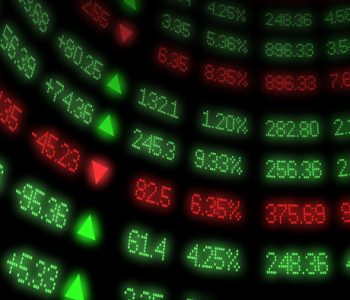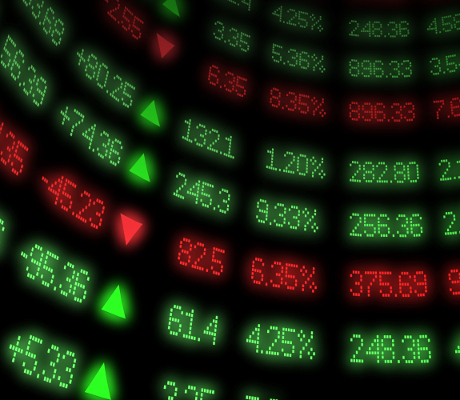Dow 30: The Top Dow Jones Stocks

Dow Jones Stocks History
The Dow Jones Industrial Average (DJIA) was created in 1896 by Charles Dow, an editor for The Wall Street Journal, and Edward Jones, a statistician. When the index was created, there were originally 12 stocks, which were mostly in the commodity and steel sectors. However, in 1928, that number jumped from 12 to 30 in an effort to diversify the index by having more than just commodity and steel stocks.
In order to be part of the Dow Jones, a company must have a great reputation, possess future sustainable growth, be an American business, be widely held by investors, and be known as a blue-chip company. The index is maintained by the averages committee.
Of the top 30 Dow Jones stocks that are part of the index today, only one has been part of the index since its inception: Below is a list of the 12 companies that were first part of the index before becoming members of the original 30 Dow Jones companies:
- American Cotton Oil
- American Sugar
- American Tobacco
- Chicago Gas
- Distilling & Cattle Feeding
- General Electric
- Laclede Gas
- National Lead
- North American
- Tennessee Coal & Iron
- S. Leather PFD.
- S. Rubber
When the index was created, these 12 stocks were the largest in market cap, profitable, and American. The 11 companies that are no longer part of the index are gone because of mergers and acquisitions. The only two expectations are General Electric Company (NYSE:GE) stock, which is still part of the index, and U.S. Leather, which filed for bankruptcy in the 1950s.
Changes still occur in the index from time to time, and not only due to mergers and acquisitions. I shall explain.
Why Would Companies Be Added or Removed to the Dow Jones Industrial Average?
Even if a company has a long history of being part of the Dow Jones 30 index, there is always the possibility of being removed at any time. There are four major reasons why a company would be removed or added to the DJIA:
- If one of the Dow Jones 30 companies were to be acquired, it would not be part of the index anymore. The buyer of the company would be added to the index in its place, provided it meets the criteria of the index.
- If one of the Dow 30 stocks is not performing well, going by the top and bottom lines (gross and net income) on financial statements over a couple years, it will be removed from the index. The decision is made based on the fact that if the trend continues, that company’s stock price will begin to fall, which will bring down the index as a whole.
- A company that is part of the DJIA could be removed even it is performing well, should another company in the same sector perform even better. This change would only occur if the business that is not part of the index has equal or greater market size and better growth ahead.
- Even if a company does get kicked out of the DJIA, there is always the possibility of it rejoining. This has been the case for General Electric, which has been removed from the index twice in the past.
There is no set meeting times for determining when a company will be added or removed, potentially occurring at any time.
How Is the Dow Jones Industrial Average Calculated?
The Dow Jones Industrial Average is calculated using a price-weighted index. Put simply, the companies in the index influence it based on their stock prices.
For example, company that is currently priced at $20.00 will have twice as much of an influence on the index compared to one with a stock price of $10.00. And if both companies were to trade higher by one percent in a single trading day, the $20.00 stock would affect the DJIA twice as much. Another extreme example would be a stock trading at $100.00 having a 10-times greater influence than one priced at $10.00.
The daily change of the index means taking the change in price of each stock and dividing it by the number of stocks within the index (30). If one of the stocks happens to be flat in the trading session, then it will have no impact on the index.
Drawbacks of Using a Price-Weighted Index
A company that has a higher stock price will have more influence on the Dow Jones Industrial Index. As the above example explains, stock LMN at $100.00, will have ten times more influence than stock RST priced at $10.00. This is seen as a negative because stock RST could have a much larger market cap compared to stock LMN and would have less influence on the index.
Another negative is that, the management teams of a company may support and drive their stock price higher with share repurchases in place. Share repurchases would result in fewer shares outstanding, there would also be support of the stock price because there will be continued buying by the company. A management executive bonus may be linked to the stock price performance and this could encourage for many share repurchased to occur.
There could be extra-ordinary events that could occur which could impact the Dow Jones Index’s volatility. One would be earnings released from a company, if there is a large change in price for a company it could influence the index. Another factor that could add volatility, would be if there are any corporate events such as mergers or acquisitions; which could result in a company having a large move. There could also be non-corporate events, this would be analyst reports, famous money manager speaking about a company or information spread about the company in the media.
Positives for the Dow Jones Using a Price-Weighted Index
Index companies must maintain their reputation–namely, a long track record of paying shareholders. Also, management must ensure the company is growing and can continue to do so while doing what’s best for stockholders.
For an investor, it is easy to understand how a much weight each company will carry. There is no need for any calculations; you only need to know the stock price to compare it to other stocks within the DJIA.
Top 30 Dow Jones Stocks
The 30 stocks that are part of the Dow Jones Industrial Average are listed below:
| Company Name | Stock Symbol |
| 3M Co | MMM |
| American Express Company | AXP |
| Apple Inc. | AAPL |
| Boeing Co | BA |
| Caterpillar Inc. | CAT |
| Chevron Corporation | CVX |
| Cisco Systems, Inc. | CSCO |
| The Coca-Cola Co | KO |
| Walt Disney Co | DIS |
| E I Du Pont De Nemours And Co | DD |
| Exxon Mobil Corporation | XOM |
| General Electric Company | GE |
| Goldman Sachs Group Inc | GS |
| Home Depot Inc | HD |
| International Business Machines Corporation |
IBM |
| Intel Corporation | INTC |
| Johnson & Johnson | JNJ |
| JPMorgan Chase & Co. | JPM |
| McDonald’s Corporation | MCD |
| Merck & C., Inc. | MRK |
| Microsoft Corporation | MFST |
| Nike Inc | NKE |
| Pfizer Inc. | PFE |
| Procter & Gamble Co | PG |
| Travelers Companies Inc | TRV |
| United Technologies Corporation | UTX |
| UnitedHealth Group Inc | UNH |
| Verizon Communications Inc. | VZ |
| Visa Inc | V |
| Wal-Mart Stores Inc | WMT |
These 30 companies, all American blue-chips, are some of the largest in their respective sectors and have a great reputation and sustainable growth. These companies are in sectors such as financials, industrial, and technology, just to name a few. The only sectors that are not represented in the DJIA are transportation and utilities. A further sector breakdown is below:
| Sector | Allocation |
| Financials | 20.3% |
| Industrials | 19.7% |
| Customer Services | 15% |
| Technology | 14.7% |
| Health Care | 12.7% |
| Oil & Gas | 6.7% |
| Consumer Goods | 6.2% |
| Basic Materials | 2.6% |
| Telecommunications | 1.6% |
All the companies within the index pay a dividend, with a few even being known as “dividend aristocrat” stocks–those with a track record of increasing their dividend for at least 25 years and having a large enough market cap to be part of the Fortune 500. These companies are Wal-Mart Stores Inc. (NYSE:WMT), Procter & Gamble Co (NYSE:PG), McDonald’s Corporation (NYSE:MCD), The Coco-Cola Co (NYSE:KO), Chevron Corporation (NYSE:CVX), Exxon Mobil Corporation (NYSE:XOM) and 3M Co (NYSE:MMM). Needless to say, being a dividend aristocrat has an influence on a company’s reputation and candidacy for the index.
Final Thoughts on the Dow Jones Industrial Index
There are many methods investors can use to invest into companies that are part of the Dow Jones Industrial Average. The first would be by purchasing the companies on an individual basis. Another method is by purchasing an exchange-traded fund that tracks the index.
I would also recommend keeping an eye on the Dow Jones Industrial Average’s performance because these are high-quality companies with a long history of rewarding shareholders. This will also give insight on how other investors are viewing the market based on the performance of the overall index. I mention this because there are times the DJIA is a forward indicator that is used to see how future markets will perform.











